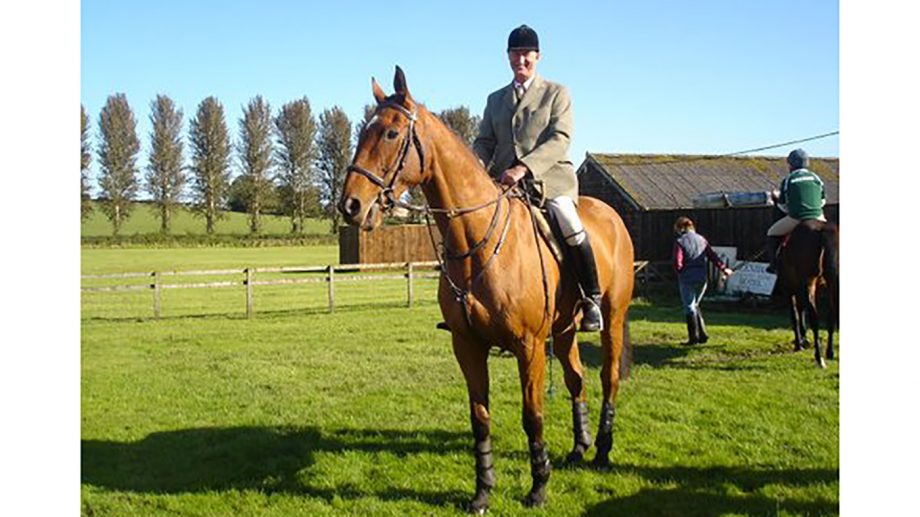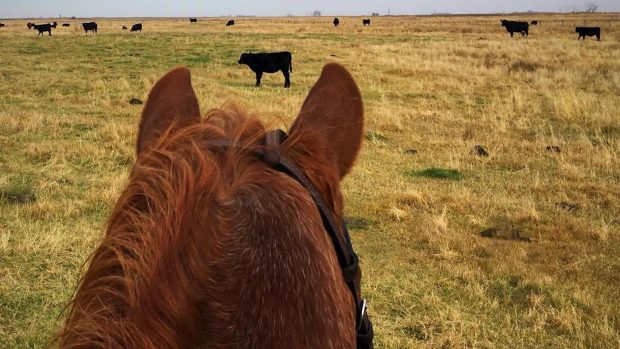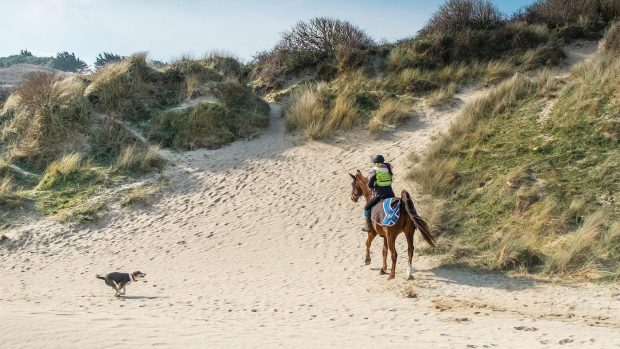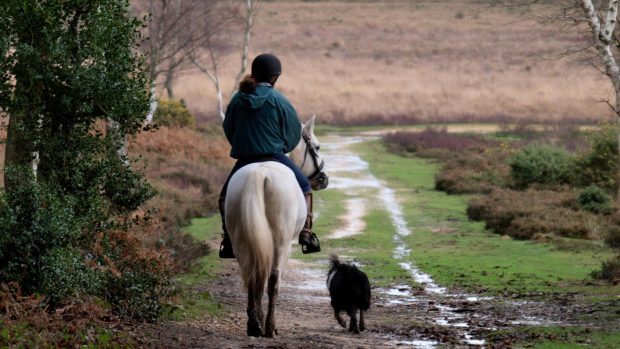The equestrian world is full of unsung equestrian heroes, working with equine charities, teaching, training, breaking and schooling and generally devoting their lives to horses. Sara Walker talks to Cheshire-based access campaigner Laureen Roberts about why it’s so important to keep riding Britain’s bridleways.
“In a way, I suppose my equestrian career could have ended at an early age!” laughs Laureen. “I started riding when I was five, and my parents promised to buy me a pony for passing my eleven plus but actually gave me a bike. That still hurts, 60 years later!
“I did eventually get my own horse though, a lovely Irish Draft called Nick of Time, when I was 30. As I was a bit of a late starter, I had a go at pretty much everything with him, from driving to hunting. Getting my own transport in the 1990s coincided with a BHS initiative to get riders riding local routes, and I discovered that both ‘Nick’ and I enjoyed riding out. I also ended up on the committee of Wilmslow Riding Club (WRC).
“In 1992, I put together a booklet called Bridleway Adventures of local rides I’d researched with the help of Mid Cheshire Bridleways, and distributed it through WRC. It was photocopied, and was full of hand-drawn map tracings I’d made myself, as I couldn’t reproduce Ordnance Survey maps for copyright reasons and there was nothing else available!
“In 2003, I was sitting and chatting with a group of friends at the yard and we said ‘someone should really do something about documenting local rides’. I realised that if we didn’t do it ourselves, it probably wouldn’t get done, so I set up North Cheshire Riders, an access group working to promote safer and more pleasant riding, and created a website to list local rides.

Laureen with Folly
“At the time, though, the routes weren’t as well maintained as they are now as councils had no efficient way of monitoring problems. Again, despite still working full-time as a university administrator, I decided to do something about it myself. Between 2003 and 2006, I put together a Rights of Way Improvement Plan to present to the council with the help of the same friends, and especially a lady called Lisa Pritchard who helped with all the documentation.
“We surveyed an area of 47km², and found there were 901 horses (according to the official national average, there should only have been 658). That really gave our argument some weight, as we calculated that brought £3m in income to the area. We set up a questionnaire to gather data about problems on routes and presented the results — the council completed all the ‘quick wins’ on our list in a fairly short space of time.
“A few years later, in 2010, we had another of those ‘someone really should’ conversations about setting up a long distance riding route in Cheshire. As it happened, I’d not only retired from work but had broken my ankle, so couldn’t ride and had some time on my hands. I was very lucky, because the British Equestrian Federation (BEF) had a fund available at the time for developing the next generation of equestrian Olympians. I applied for funding, pointing out that riding out helped develop essential equestrian skills and the next generation needed somewhere to actually do it! The council matched the BEF’s money, which paid for all the signage on the new route, and some leaflets. I also had to find some sponsors. It took a lot of work, as we had to get one section of the route upgraded to a bridlepath, but the 33-mile long Laureen’s Ride opened in March 2012.

Laureen’s Ride signage
“The thing that’s made the most difference since I started working for improved access rights is definitely the internet. Now, you can join forums, build communities, work with other people and carry out research — Laureen’s Ride wouldn’t have been possible without that.
“The roads are getting busier and more dangerous, so it’s vital to preserve our off-road riding. The problem is, if people don’t have to pay for something they tend not to value it, and according to the Countryside & Rights of Way Act 2000, we could lose the right to ride on any path that’s not recorded by 2026. If you regularly ride a route and it’s not clearly signposted as a bridlepath, do take the time to check that you have the right to ride it and get it recognised, or you risk losing it. Just talk to your local BHS or bridleways group and they’ll show you what to do. Ninety per cent of these people are volunteers, and they do an amazing job.
Article continues below…
You might also be interested in:

My life with horses: Pam Rigby — ‘I must have taught thousands of children to ride’
Sara Walker talks to Cheshire-based Pam Rigby BHSII, who looks back at her 50 years working as a BHS instructor

My life with horses: Dickie Jeffreys — ‘it’s quite right that eccentrics like me are a bit more regulated now!’
H&H talks to Northumberland-based Dickie Jeffreys, who runs Kimmerston Riding Centre wife Jane, about hunting, running the centre and the

Subscribe to Horse & Hound this spring for great savings
Now in her early 70s, Laureen still enjoys long distance riding and organised pleasure rides with her current mount, Highland pony Folly.
“All my horses have taught me something,” she smiles. “My first taught me to love riding, and my second taught me how little I knew about it! My third taught me to refine my riding, and I’m still learning with Folly. It’s so important to keep riding those routes and preserving our equestrian heritage.”
For all the latest equestrian news and reports, don’t miss Horse & Hound magazine, out every Thursday





